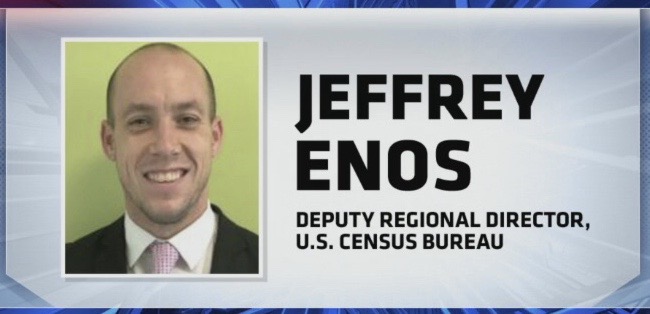
The recent joint announcement from U.S. Department of Commerce Secretary Wilbur Ross and U.S. Census Bureau Director Steven Dillingham that census field operations would return on June 1st, could be viewed as a test of faith and mental resilience for census staff across the country.
“In-person activities, including all interaction with the public, enumeration, office work and processing activities, will incorporate the most current guidance to promote the health and safety of staff and the public. This will include recommended personal protective equipment (PPE) and social distancing practices,” the statement read on April 13.
According to Jeff Enos, U.S. Census Deputy Regional Director, the adjusted calendar has been carefully designed to meet target goals with safety in mind. Counting the days until enumerators will put back on their vests and resume operations, Enos has been encouraged by reaction to the announcement so far.
What is the level of morale among census workers since the pandemic?
Enos: It’s a very ‘can-do’ attitude. We understand it is a challenge, but first and foremost we are putting the health and safety of our employees above everything else. The census leadership has been very responsive.
How have you addressed concerns over safety and social distancing in the field?
Enos: We’ve worked very closely with federal, state, and local health officials to ensure the safety of our employees, and made some adjustments to our census operational timelines in order to keep the public healthy and safe, and to ultimately ensure a full and accurate census count.
Are you confident the June 1st return date will remain in place?
Enos: The pandemic is changing day to day, and we are monitoring the situation, prepared to be flexible for any changes based on what the health officials say. Moving forward, the plan is to get our offices staffed on June 1st and be there out in the field soon thereafter.
There are a few avenues available to track census response rates online. Where should residents go to find the most accurate information?
Enos: I would refer everyone to the 2020census.gov website. The interactive map is the most accurate and best official way to track census response. It can be done at many levels of geography. You can go from the whole country view to states and counties. You can even drill below the county level to census tract (a geographic region defined for the purpose of taking a census,) which is low-level geography (2 to 8,000 people may live in a census tract.) You can also look at city and congressional districts in towns and townships and even tribal areas.
Has the COVID-19 pandemic made hard-to-count (HTC) populations, even more difficult to track and count?
Enos: There are many variables in hard-to-count populations. We can look at a map of the 2020 census response and you can see areas where the census responses are lower. They tend to be the areas that have been historically been known as hard-to-count.
My job is to do the outreach and do the actual field operations, so we focus the majority of our outreach in those hard-to-count areas.
We work closely with our partners on the ground for outreach. Locally community-based organizations and other organizations who really know their constituency and how to reach them. If people are home, they can still respond online, over the phone or through the paper questionnaire.
What type of operational adjustments are being made to reach rural areas around Kern County (Lamont, Arvin, Lost Hills, Buttonwillow)?
Enos: One adjustment we made was putting on hold one of our operations know as Update Leave, which is designed for rural areas who only receive mail delivery through P.O. Box.
Since we have to tie census responses to an address on the ground, we can’t mail something to a P.O. Box, because there’s no way for us to tie a P.O. Box to a specific address on the ground.
How does Update Leave operate?
Enos: For Update Leave, we send out a census taker/enumerator to these rural areas and they canvas the area. They update our address list, make sure we have all the addresses and they leave a questionnaire at the door, hence ‘Update Leave.’ That operation had just kicked off when the pandemic hit, and we had to pull our staff out of the field and put the operation on hold, which is the reason why, especially in these rural areas, a lot of the residents have not received any kind of paper questionnaire invitation at their door. They are in this type of geography. For those households, we ask them to be patient and wait. A questionnaire will be delivered to their door when we resume our operation in June.
Looking ahead to June, is there anything else you’d like to add?
Enos: I want to emphasize the census is still on and we’re still accepting responses. Our responses are right on track with our projections pre-COVID-19 pandemic. We are seeing the actual responses are in line with projections, so we are greatly confident that we will be able to have a full and accurate census count.
Related Story: Census operations plan adjusted due to COVID-19, return to field set for June
Kern Sol News is a youth-led journalism organization in Kern County. In their stories, reporters shine light on health and racial disparities in under-served communities across Kern. For more stories by South Kern Sol, head to southkernsol.org.